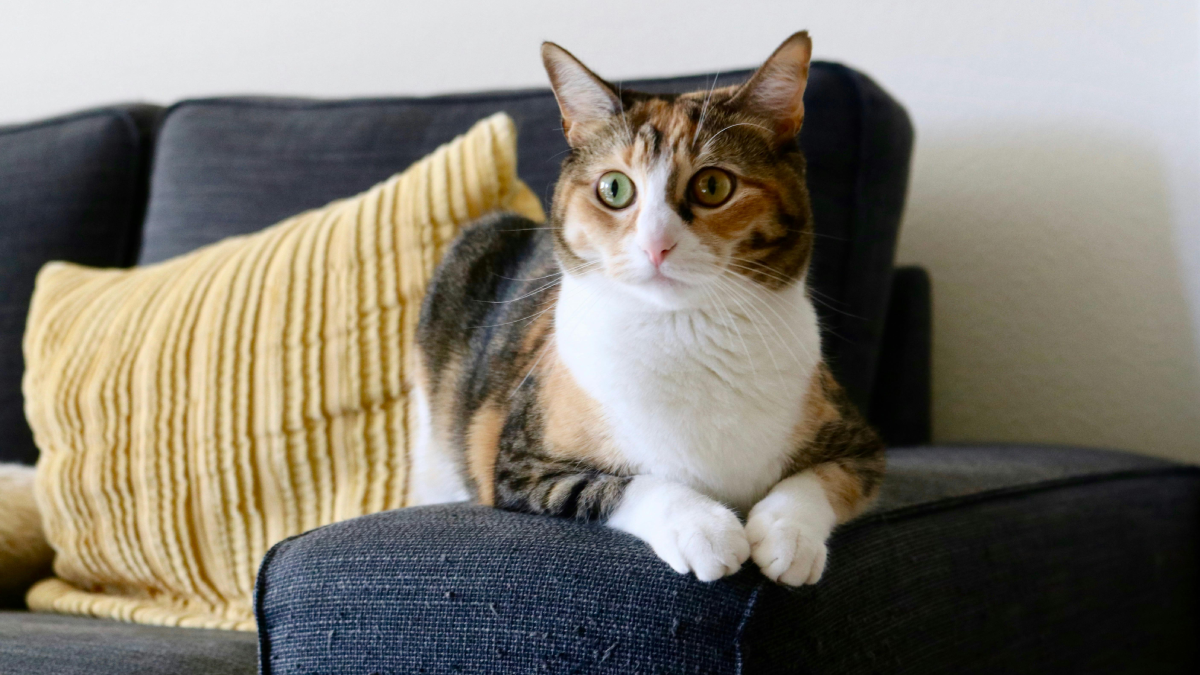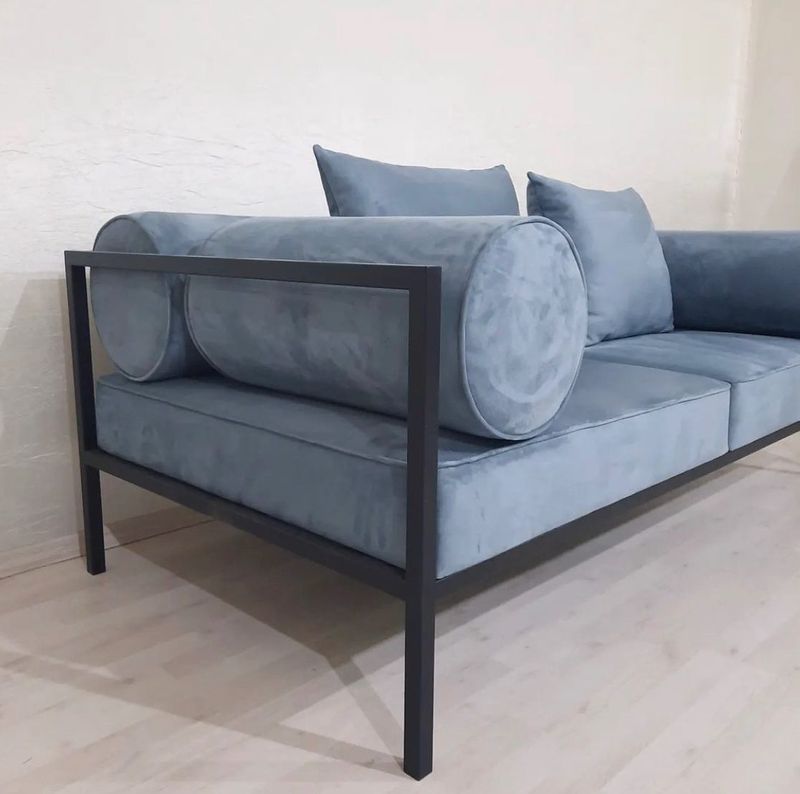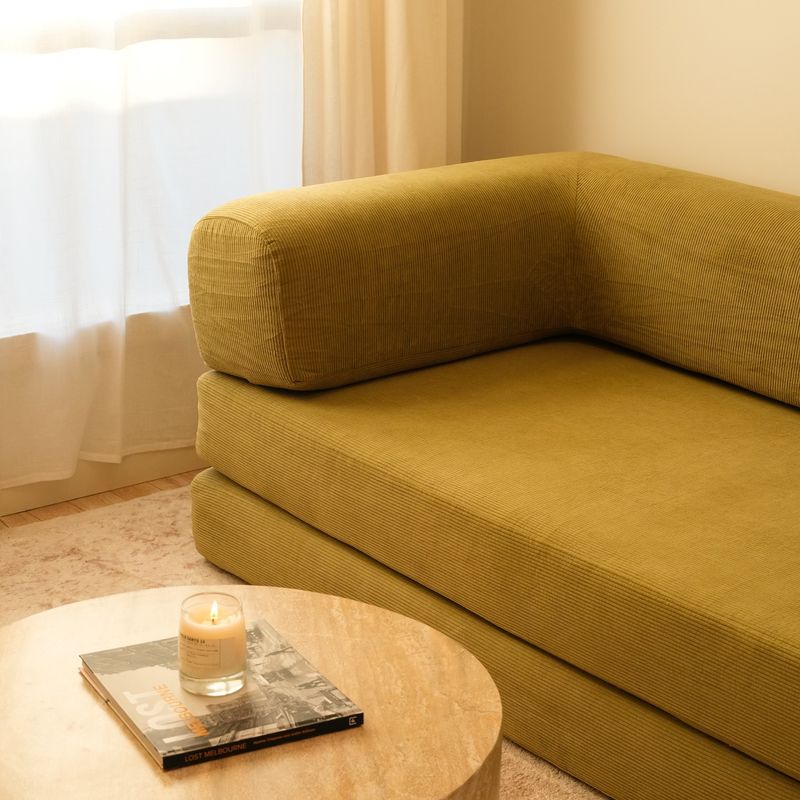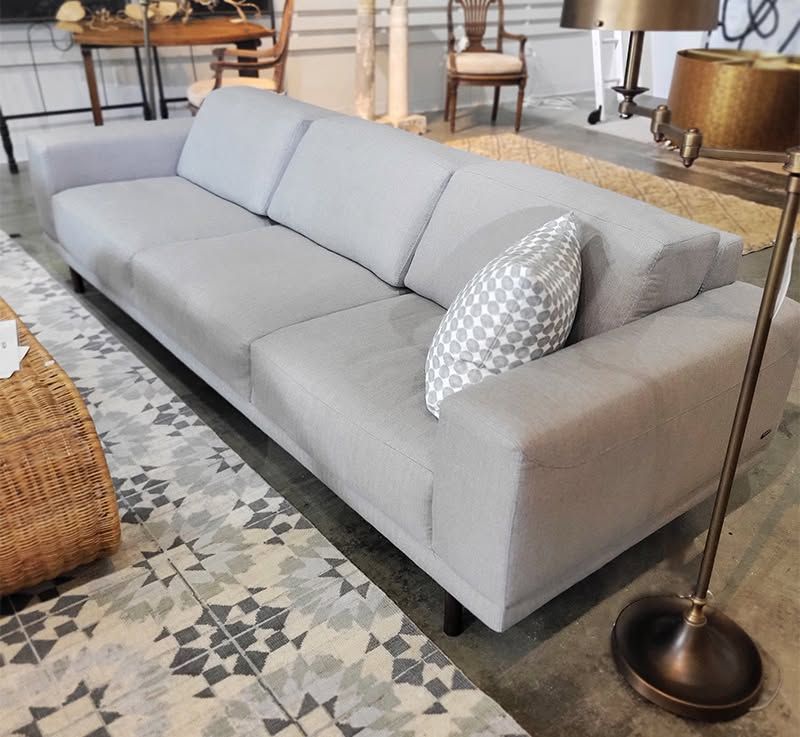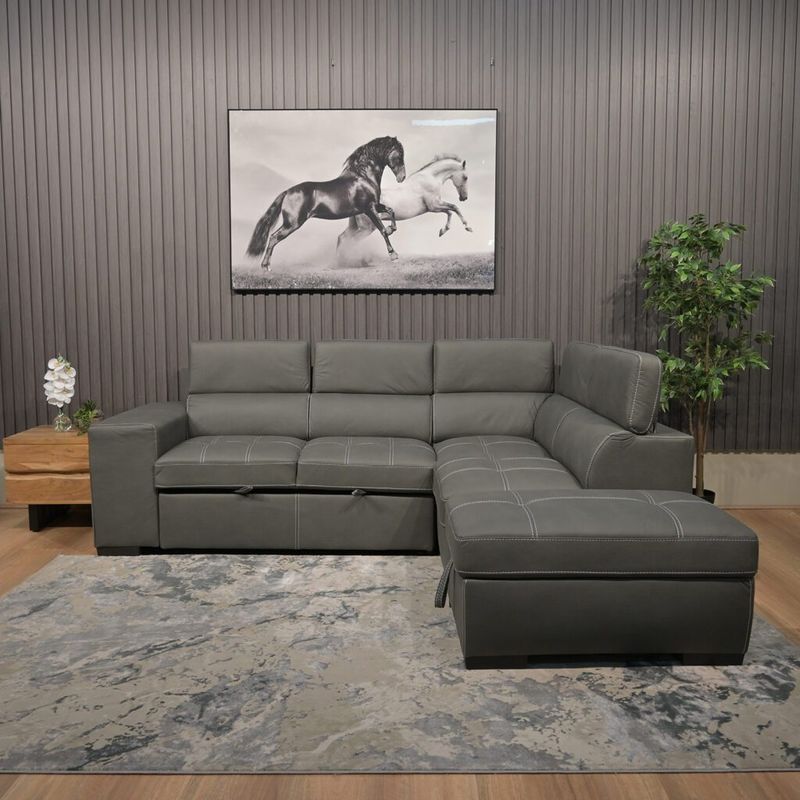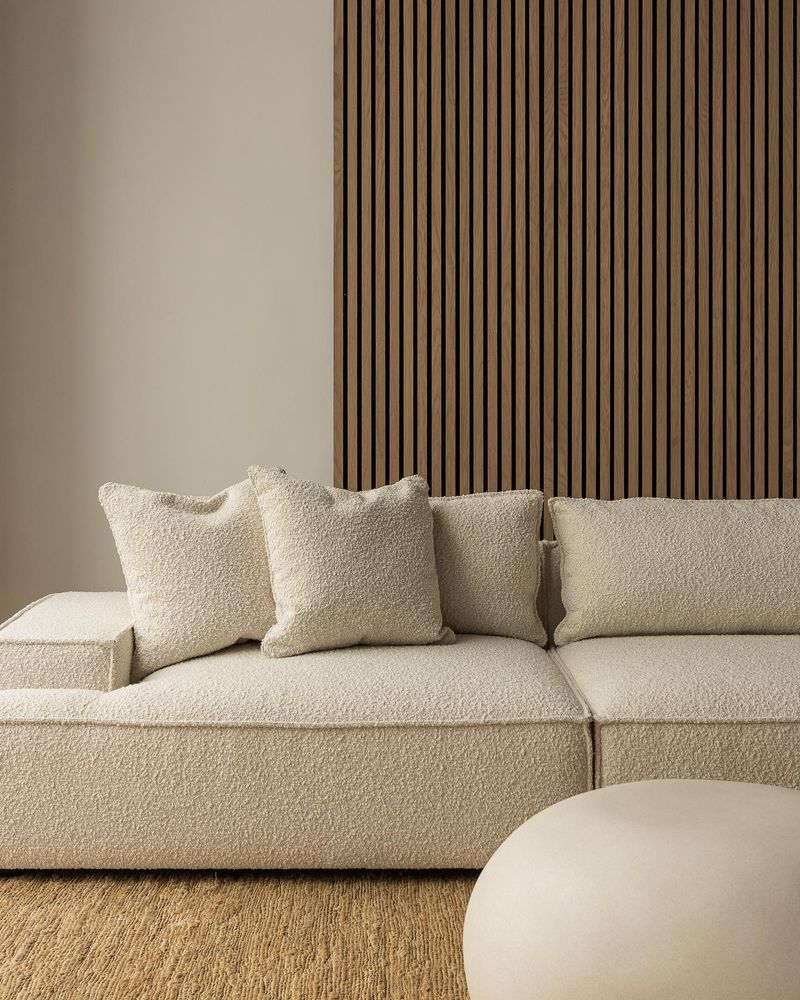📖 Table of Content:
Living with cats means accepting certain realities about your furniture. Our feline friends view sofas not as seating but as scratching posts, launch pads, and nap zones.
After replacing three couches in five years, I finally learned what features actually survive the daily cat olympics. Whether you’re shopping for a new sofa or trying to protect your current one, these cat-resistant features will save your sanity and your wallet.
1. Microfiber Magic
Cats meet their match with microfiber upholstery. This tightly woven synthetic fabric creates a surface where claws simply can’t catch, making it naturally resistant to scratching damage. Unlike leather or loose weaves, microfiber doesn’t invite your cat’s attention or provide that satisfying “dig in” feeling they crave.
The best part? Cat hair doesn’t embed itself deeply into microfiber. A quick vacuum or wipe with a damp cloth removes fur without the need for special tools. Spills and accidents also tend to bead up rather than immediately soaking in, giving you precious seconds to grab a towel.
Look for high-grade microfiber with a dense weave for maximum durability. The slight texture feels comfortable for humans while remaining less appealing to feline scratching instincts.
2. Removable, Washable Covers
Nothing beats the convenience of slip-covered furniture when you share your home with cats. These genius inventions allow you to completely remove the outer fabric layer and toss it in the washing machine. Hairballs, accidents, and mysterious stains become minor inconveniences rather than permanent fixtures.
Smart cat owners keep an extra set of covers on hand for immediate replacement during wash day. Some companies even sell replacement covers separately, extending your sofa’s life indefinitely. No more awkwardly positioning throw blankets to hide stains!
When shopping, look for covers with hidden zippers and secure attachment methods. The best designs stay firmly in place even when cats use the sofa as a racetrack during their midnight zoomies.
3. Scratch-Resistant Frame Materials
Metal or solid hardwood frames outlast their particleboard counterparts by years in cat households. My previous particleboard sofa succumbed to a structural collapse after my 12-pound tabby discovered a weak spot and turned it into his personal digging project.
Exposed wooden legs often become irresistible scratching posts. Metal legs or completely upholstered bases eliminate this temptation entirely. For wooden components that must remain visible, look for extremely hard woods like oak or maple with rounded edges that offer less satisfying scratching surfaces.
Manufacturers rarely advertise frame materials prominently, so don’t hesitate to ask specifically about what lies beneath the upholstery. The investment in quality construction pays dividends in longevity.
4. Tight Cushion Construction
Loose, pillow-back sofas might look inviting, but they’re essentially cat playgrounds waiting to happen. Cushions that shift easily become toys to drag around, hide under, or burrow into. The resulting misshapen lumps never quite recover their original form.
Fixed-back designs with foam cushions maintain their shape despite your cat’s best efforts to create the perfect nest. Some manufacturers now offer high-resilience foam specifically engineered to bounce back after compression. This technology prevents the permanent indentations that form when cats claim their favorite spots.
An added bonus: tightly constructed cushions trap less hair in their seams and corners. The fewer crevices your sofa has, the easier it will be to keep clean of fur and dander.
5. Performance Fabric Protection
Factory-applied fabric protectors create an invisible shield against the inevitable messes of cat ownership. Unlike aftermarket sprays, these treatments penetrate each fiber during manufacturing, creating longer-lasting protection that won’t wear off after a few cleanings.
Brands like Crypton, Revolution, and Sunbrella, originally developed for commercial setting,s now offer residential lines specifically addressing pet concerns. Their fabrics repel liquids while resisting odor absorption—a game-changer for homes with multiple cats.
The technology has advanced dramatically in recent years. Today’s protected fabrics feel soft and natural rather than stiff or plastic-like. Many companies now offer performance fabrics in dozens of colors and patterns, eliminating the need to compromise on style for durability.
6. Hidden Reinforced Corners
Sofa corners bear the brunt of feline abuse as prime scratching locations and launch pads for aerial acrobatics. Smart manufacturers have begun reinforcing these vulnerable areas with extra stitching, corner guards, or heavier materials concealed beneath the upholstery.
Some furniture makers add a layer of synthetic material between the fabric and padding at stress points. This invisible barrier prevents claws from penetrating the softer stuffing underneath. When examining potential purchases, press firmly on corners to test their resistance.
For existing sofas, consider strategically placed clear corner protectors. Modern versions attach discreetly while providing a slick surface that discourages scratching. Your cat will quickly learn these spots don’t provide the satisfying resistance they’re seeking.
7. Modular Design Flexibility
Sectional sofas with modular components offer a brilliant solution for cat owners. When inevitable damage occurs to one section, you can replace just that piece rather than the entire sofa. This targeted approach saves thousands over the lifetime of your furniture.
The best modular designs feature identical pieces that can be rotated periodically, distributing wear evenly across all sections. Some clever cat owners intentionally purchase an extra module to keep in storage as an immediate replacement for severely damaged sections.
Look for systems with secure connection mechanisms that prevent pieces from sliding apart when cats race across them. Heavy-duty metal brackets or locking systems work better than plastic clips or Velcro, which can wear out quickly under active cat traffic.
